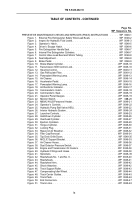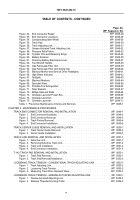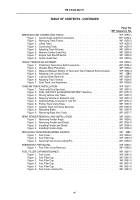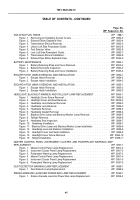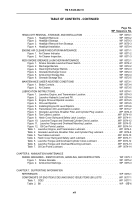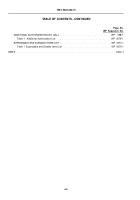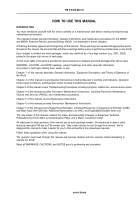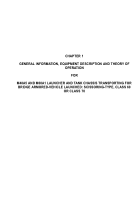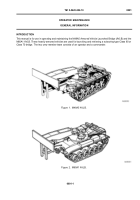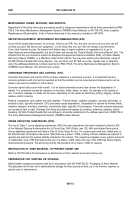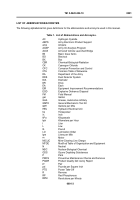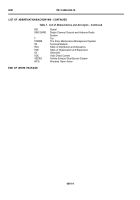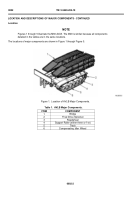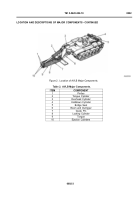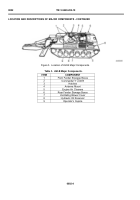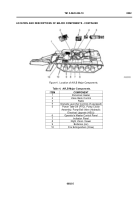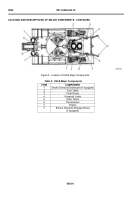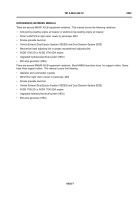TM-5-5420-202-10 - Page 38 of 535
0001
TM 5-5420-202-10
MAINTENANCE FORMS, RECORDS, AND REPORTS
Department of the Army forms and procedures used for equipment maintenance will be those prescribed by PAM
750-8, The Army Maintenance Management System (TAMMS) Users Manual, or AR 700-138, Army Logistics
Readiness and Sustainability. A list of forms referenced in this manual is included in WP 0076.
REPORTING EQUIPMENT IMPROVEMENT RECOMMENDATIONS (EIR)
If your AVLB needs improvement, let us know. Send us an EIR. You, the user, are the only one who can tell
us what you don’t like about your equipment. Let us know why you don’t like the design or performance.
If you have Internet access, the easiest and fastest way to report problems or suggestions is to go to
https://aeps.ria.army.mil/aepspublic.cfm (scroll down and choose the “Submit Quality Def ciency Report” bar). The
Internet form lets you choose to submit an Equipment Improvement Recommendation (EIR), a Product Quality
Def ciency Report (PQDR), or a Warranty Claim Action (WCA). You may also submit your information using an
SF 368 (Product Quality Def ciency Report). You can send your SF 368 via e-mail, regular mail, or facsimile
using the addresses/facsimile numbers specif ed in PAM 750-8, The Army Maintenance Management System
(TAMMS) Users Manual. We will send you a reply.
CORROSION PREVENTION AND CONTROL (CPC)
Corrosion Prevention and Control (CPC) of Army materiel is a continuing concern. It is important that any
corrosion problems with this item be reported so that the problem can be corrected and improvements can be
made to prevent the problem in future items.
Corrosion specif cally occurs with metals. It is an electrochemical process that causes the degradation of
metals. It is commonly caused by exposure to moisture, acids, bases, or salts. An example is the rusting of
iron. Corrosion damage in metals can be seen, depending on the metal, as tarnishing, pitting, fogging, surface
residue, and/or cracking.
Plastics, composites, and rubbers can also degrade. Thermal (heat), oxidation (oxygen), solvation (solvents), or
photolytic (light, typically ultraviolet (UV)) processes cause degradation. Degradation is caused by thermal (heat),
oxidation (oxygen), solvation (solvents), or photolytic (light, typically UV) processes. The most common exposures
are excessive heat or light. Damage from these processes will appear as cracking, softening, swelling, and/or
breaking. SF 368, Product Quality Def ciency Report, should be submitted to the address specif ed in PAM 750-8,
The Army Maintenance Management System (TAMMS) Users Manual.
OZONE DEPLETING SUBSTANCES (ODS)
The use of Class 1 ozone depleting substances (ODS) for new acquisitions has been curtailed by Section 326
of the National Defense Authorization Act of Fiscal Year 1993 (Public Law 102, 484) and related Army policy.
Ozone depleting substances are listed in Title VI of the Clean Air Act. For systems procured and f elded prior to
the effectiveness of the above law (June 1993) that use a Class 1 ODS, a listing of those substances required to
operate and maintain the system shall be included in the manual. This requirement applies to any system procured
or f elded after June 1993 that requires the use of a Class 1 ODS, where the use of the ODS has been properly
documented and waived. The procuring activity will provide a list of Class 1 ODS on request.
DESTRUCTION OF ARMY MATERIAL TO PREVENT ENEMY USE
Refer to TM 750-244-6 for instructions on destruction of Army materiel to prevent enemy use.
PREPARATION FOR SHIPPING OR STORAGE
Administrative storage procedures shall be in accordance with DA PAM 700-32, Packaging of Army Materiel.
The placement of the test set in administrative storage for short periods of time, up to six months, requires no
special care or maintenance.
0001-2
Back to Top


